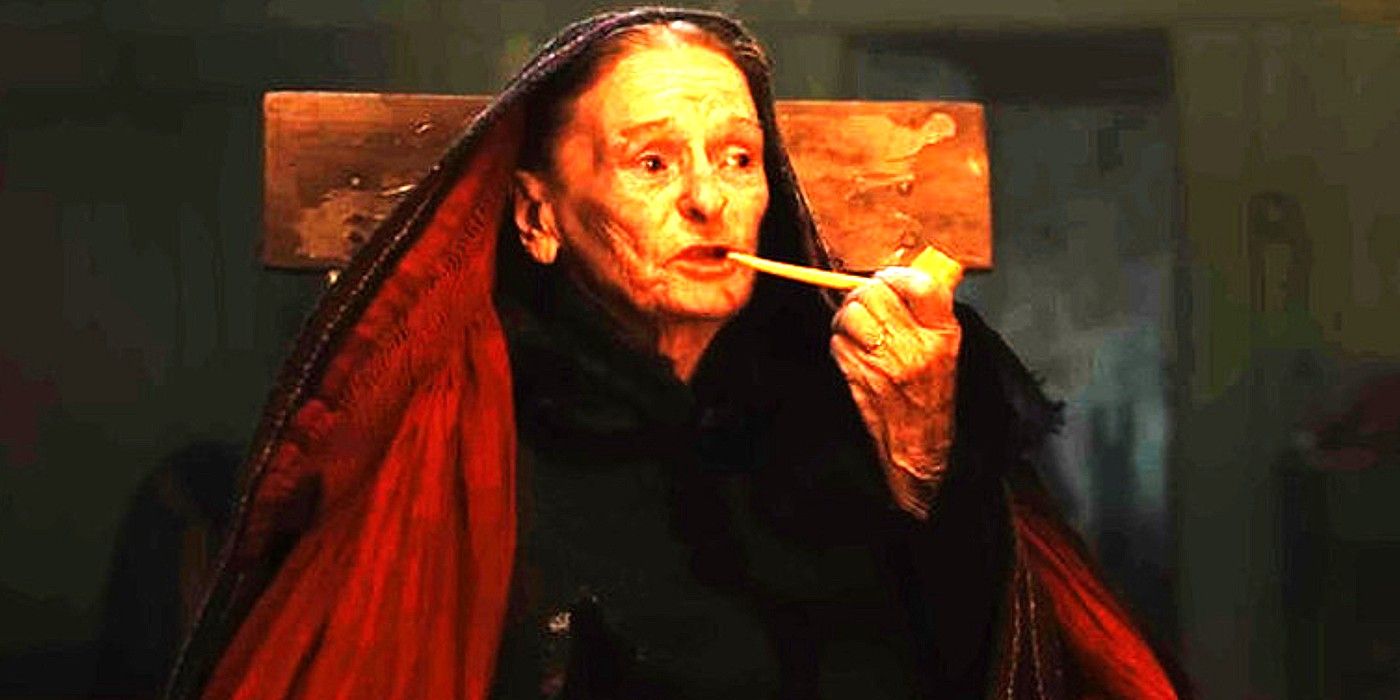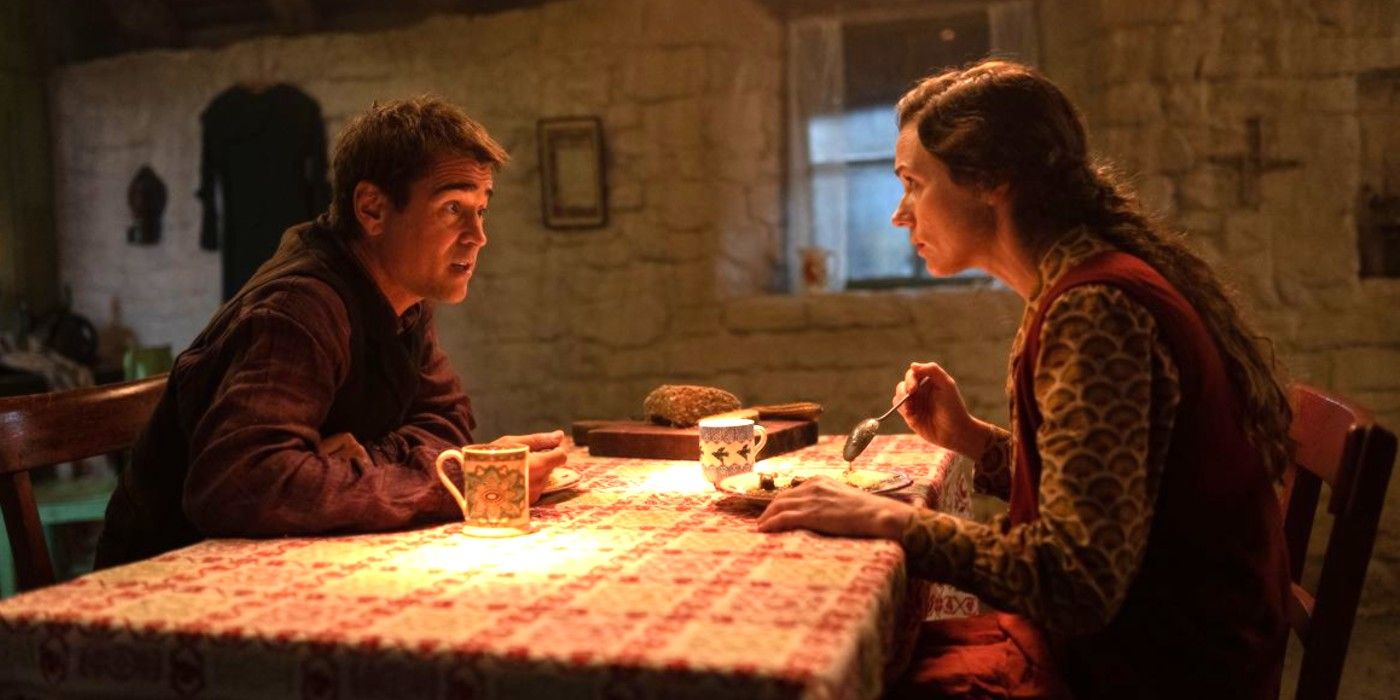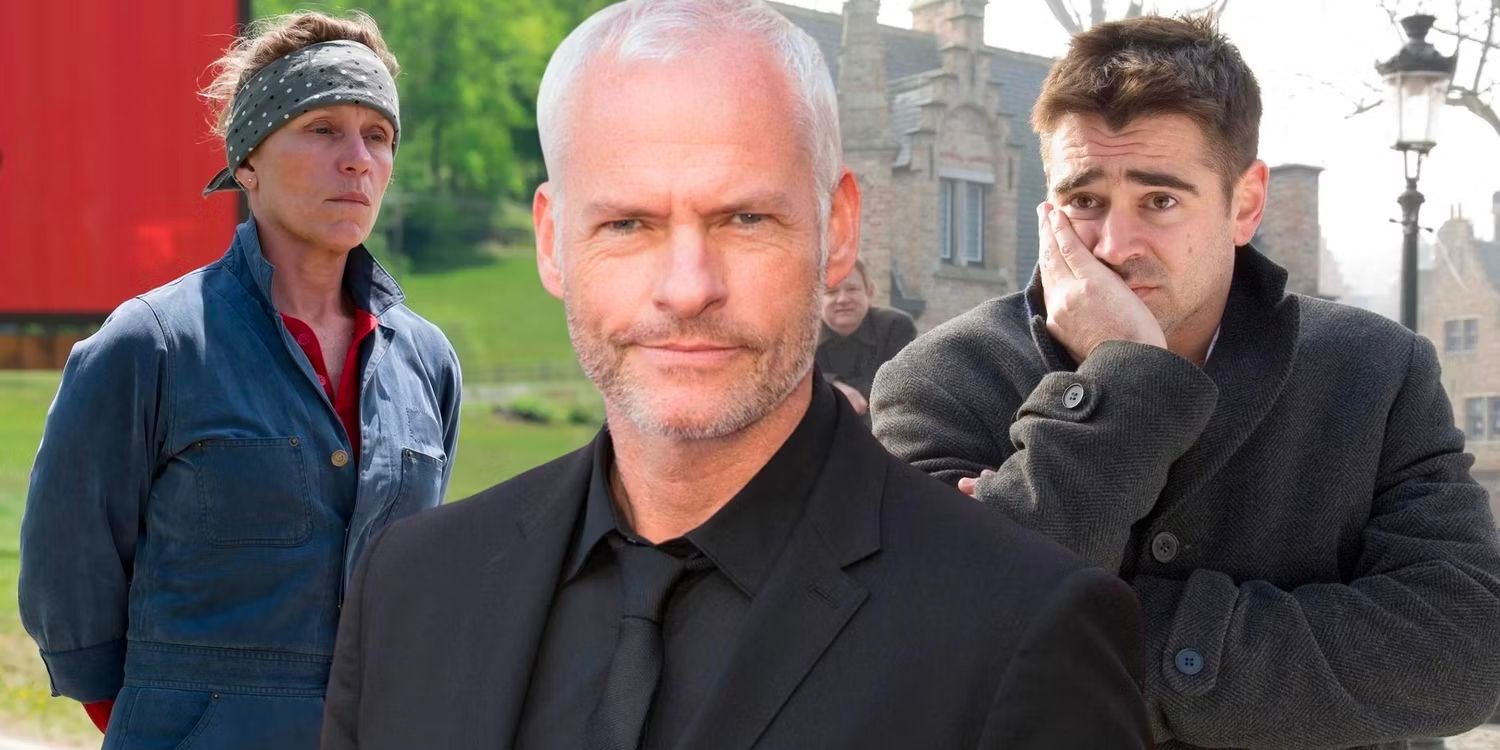[ad_1]
Warning: Spoilers for The Banshees of Inisherin.Martin McDonagh’s The Banshees of Inisherin won three Golden Globe Awards in 2023 — including the one for best picture in the musical/comedy category — but the dark comedy’s twisty ending is difficult to decode on first viewing. McDonagh’s movies and plays are typically filled with allusions to classics, subtle gags and motifs that aren’t easily apparent, and complex imagery. The Banshees of Inisherin ending, explained upon closer inspection, shows that the 2022 under-the-radar hit is no exception to this rule.
The Banshees of Inisherin’s offbeat plot sees the good-natured Pádraic (The Batman actor Colin Farrell) gradually unravel after his former friend, Colm (Brendan Gleeson), abruptly refuses to speak to him. While Pádraic’s sister Siobhán (Kerry Condon) and the troubled local boy Dominic (Barry Keoghan) attempt to defuse the pair’s escalating battle, their efforts prove fruitless. By the end of The Banshees of Inisherin, Dominic is dead, Siobhán has left Inisherin, and Colm has committed an irreversible act of self-mutilation and unintentionally turned Pádraic into an enemy for life.
What Happens In The Banshees of Inisherin’s Ending
Surprisingly, neither of the movie’s lead characters dies in The Banshees of Inisherin ending. Dominic, however, is not so fortunate. That said, this does notably break the death trend in Martin McDonagh’s movies. Pádraic speaks to Colm despite the latter repeatedly warning him that he would sever his own fingers if he did so. Meanwhile, Siobhán gently rebuffs Dominic’s romantic advances and moves to the mainland for a library job. True to his word, when Pádraic once again attempts to repair the friendship, Colm cuts off his fingers with a set of shears and throws them at the door of Padraic’s cottage. Pádraic’s beloved pet pony, Jenny, eats one of the severed digits, chokes, and dies.
In retaliation, a heartbroken Pádraic burns down Colm’s house with Colm inside. The local policeman, Peadar (Gary Lydon), who is also Dominic’s sexually abusive father, sees this and rushes to Pádraic’s house to beat him senselessly. On the way, he meets the elderly Mrs. McCormack (Sheila Flitton), who wordlessly leads him to his son’s waterlogged corpse. Barry Keoghan’s Banshees of Inisherin character kills himself offscreen, disillusioned by the depths of Pádraic’s cruelty, Siobhán’s departure, and his father’s sexual and physical abuse. The next morning, Colm meets Pádraic and suggests that their feud has reached an end. Pádraic informs his former friend that Colm’s debt won’t be settled until one of them is dead.
Did Mrs. McCormack’s Prediction Come True?
The creepy Mrs. McCormack initially seems like an annoying old woman when she is first introduced early in The Banshees of Inisherin. However, she later takes on a more sinister significance as she acts more like the titular mythological figures, warning Pádraic that one or two deaths will visit the island before the month is out. While there are no literal banshees seen in the movie, Mrs. McCormack’s prediction does turn out to be right – crucial to the real meaning of The Banshees of Inisherin ending, explained from the movie’s mythological themes. Dominic dies, and Mrs. McCormack is the one to find his body, while Pádraic’s prized pony, Jenny, can be considered the second death of her prophecy if animals count.
However, this is more than likely a self-fulfilling prophecy. Mrs. McCormack is originally established as a nosy neighbor and an unpleasant gossip, so it stands to reason that she may have told Pádraic about these potential deaths to worsen his existing paranoia and escalate his fight with Colm. Like most of the parochial, spiteful denizens of Inisherin, Mrs. McCormack struggles to leave Pádraic alone when the option of messing with his head is available. As such, if her prophecy does come true, this is as much because she toys with Pádraic as it is evidence of any supernatural goings-on. In any case, Mrs. McCormack is definitely one of the reasons why The Bansees of Inisherin counts among Martin McDonagh’s best movies.
Is Pádraic and Colm’s Feud Finally Over?
Pádraic and Colm’s feud is empathically not over in The Banshees of Inisherin ending. While he is unhinged enough to cut off his fingers for the sake of gaining some space from Pádraic, Colm shows real remorse for the first time when he learns that he accidentally caused Jenny’s death. This, along with losing his house to a fire, leads Colm to assume that he and Pádraic are now even. However, Pádraic’s character has also undergone a meaningful shift, abandoning the niceness that defined him at the beginning of the film. In The Banshees of Inisherin’s ending, Pádraic decides on mutually assured destruction over peace.
While Colm hopes to secure a musical legacy for himself by getting some distance from his former friend, he ends up instead igniting a feud that seems as if it will kill both of them — in stark contrast to the idyllic setting The Banshees of Inisherin establishes in the beginning. Indeed, while Pádraic started The Banshees of Inisherin blissfully unaware of the limitations of his small-town existence, he ends the movie’s story as a spiteful, hate-fueled figure who has no interest in reconciling with Colm. Although the pair have held onto their shared humanity — as evidenced in the tragicomic moment where Colm thanks Pádraic for taking care of his dog and Pádraic assures him it was no problem — their relationship is irretrievably destroyed. With neither man making any plans to leave the island, the feud between the two is bound to just get worse and worse.
What The Banshees of Inisherin’s Ending Really Means
Like the ending of Three Billboards Outside Ebbing, Missouri, Martin McDonagh’s previous movie, The Banshees of Inisherin’s final scenes are left ambiguous. To understand The Banshees of Inisherin’s ending, the historical and cultural context of its setting is important. The film is set in 1923, at the height of the Irish civil war, on a fictional Irish island whose name translates to “the island of Ireland.” While Irish literature, poetry, and music from a few years earlier rightfully celebrated and immortalized the triumphant defeat of English colonial rule in Ireland, works that mythologized the ensuing civil war were few and far between. There was nothing beautiful, uplifting, or awe-inspiring about a war that split families and pitted friends against each other, which also helps pinpoint exactly when The Banshees of Inisherin takes place.
The Banshees of Inisherin sees Colm try to cement an artistic legacy for himself by abandoning niceness, but this leads Pádraic to note that Colm hypocritically sees nothing wrong with befriending a child-abusing corrupt cop while refusing to speak to Pádraic because he is “dull.” By the end of The Banshees of Inisherin, Colm longs for a return to the dullness of his former friendship, no longer enamored with romantic ideals of suffering now that he has lost his fingers and his home to a pointless battle of wills.
However, Colm and Pádraic can’t go back, as like the country they are so close to, they are now divided by their differences, locked in a fight that will eventually cost them their lives. The character’s drastic but believable evolution underscores why Padraic is among Colin Farrell’s best movie roles. In The Banshees of Inisherin’s ending, Colm gets the terrible beauty, artistic inspiration, and deep meaning he was searching for, but it comes at the cost of his friendship with Pádraic, his home, and, ironically, even the ability to play the mournful music he so loves.
What Banshess Of Inisherin Means To Director Martin McDonagh
The Banshees of Inisherin ending – explained from director Martin McDonagh’s point of view – is also about the importance of telling an authentically human story. While McDonagh has been criticized for his use of Irish archetypes in depicting the denizens of the island, these exaggerated characterizations also serve as allegorical tools for the real story he wanted to tell. “The starting point was to capture the sadness of a breakup, be it a love breakup or a friendship one,” said McDonagh in an interview (via IndieWire). “Being on both sides of that is an equally horrible position. To treat the sadness of both sides as truthfully as possible was the main thing I wanted to get right with this.” This further explains why Colm and Pádraic’s feud is never resolved: it’s meant to evoke the inherent trauma in every meaningful human relationship. Considering how The Banshees of Inisherin bagged the 2023 Golden Globe Award for best comedy, McDonagh undoubtedly succeeded with what he set out to do.
[ad_2]
Source link

.jpg)



